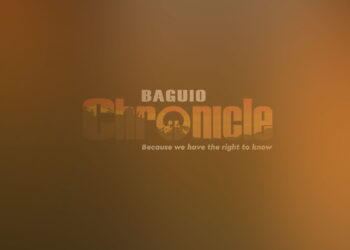“MURAKAMI writes about how rain equally scatters sadness, rivers split the boundaries of land before titles could, and a childhood memory from my grandmother’s cabbage farm is where I heard the Rainbirds sing.” That’s from one of the opening salvos in Discernments and Spaces by Kervin Calabias, which begins with the question “‘What hasn’t been written about water?'” and ends with the answer, “Everyone writes about water.”
Why is the Ubbog Cordillera Writers Group called Ubbog? Forget Promethean fire. Everyone writes about water. The ubbog, the bawëk, is the beginning of the batawa and of civilizations. Creation truly began with the ritual cleansing brought about by the primordial flood. There are Bontoc, Kalinga, and Kankanaey variants to the flood tale: Bangan and Gatan (Bugan and Wigan), each atop a specific mountain (almost always one of them is Kalawitan), emerge as the only survivors of the deluge. Was it Meñez-Coben or Lambrecht who concluded that among the Ifugao it was wet rice cultivation, not the discovery of fire, that birthed ritual and therefore culture?
The late Lilia Quindoza-Santiago: “The water from the mountain creates a map as it were, leaves traces of where it came from and where it is headed and when it finally reaches the sea, the water becomes one with the great cosmos.” Arnold Azurin gave the mountain-ocean journey good phraseology: “the riverine nexus.”
Last weeks of July: Rainwater seeps into our house in Pinget, occupies the streets in La Trinidad, tramples villages in its path as it is shown on TV and YT by the world’s media in Western Germany. One thinks of aerial views of coastal villages in Japan where houses dot the brown flood, the quiet neat rows intact but ready to recede inland after the tsunami. Last month Angela Merkel visited the inundated Rhinelands and declared that there are no words in the German language to describe that level of watery deluge. I find that hard to believe. But it also makes sense, and perhaps that’s why we keep writing about water. It’s inexplicable. We’re still finding the words! We can never get enough of water; we’re also sick of it. Water creates; water destroys.
In the wake of Typhoon Ompong back in 2018 I was in Bontoc (Bone Talk?) and I stumbled upon a book published in 2016 entitled, “To My Fellow Igorot Youth” written by Ryan Guinaran. One of the Ibaloy poems in the collection was entitled “Umsiang.” While Dr. Guinaran provides an English and Filipino translation of the poem, he kept his title “Umsiang” untranslated. I did not know what umsiang was. What is umsiang? The Ibaloy dictionary does not have entries under the letter “U.” The word “omsiyang” is different from “umsiang.” One of my former co-teachers in St. Mary’s School was an Ibaloy and a very sharp native speaker of Ibaloy, but even she could not figure out what umsiang was. Days later she guessed that umsiang was probably just another word for demshang. But I will also leave umsiang untranslated here, so those who do not understand will go through the same confusion I went through, or be compelled to go ask an Ibaloy friend.
The lead-in events to the 8th Cordillera Creative Writing Workshop are a series of Zoom lectures delivered by some interesting voices in regional Philippine Literature. The July lectures included Dr. Ryan Guinaran of Diteng Inc. and Benguet State University; and Mr. Kervin Calabias, now a PhD candidate in Lingnan University, Hong Kong.
Dr. Guinaran talked about his creative process which traverses his many fields in medicine, community work, indigenous health, poetry, photography, umsiang. Mr. Calabias talked about writing the minority; using Candy Gourlay’s Bone Talk as point of departure, representations of the indigenous that should escape fixities, the journey across the sea from Bontoc to St. Louis, Missouri.
Dr. Guinaran revealed that he did not know what “umsiang” meant when it was first mentioned to him by a grandfather. His confusion over the new word led him to expound on its meaning through a poem: “Hajay aya i pansigshan – / No ayshi shanom, ayshi kiyëw, / Ayshi balëy? / Nganto ma i maykowan soni aapo tayo? / Nganto ma i maysajok, / Maypëkan soni aanak tayo?” Everyone writes about water. It was a poem written way before 2018’s Typhoon Ompong and the disaster in Itogon that claimed many lives and livelihood. The epigram of the poem: “Para soni aakik shi Itokon.” The last stanzas to that poem also rang prophetic: “Niman, ikowan jo, ngantoy balitok? / Bato ono bawëk? Bato ono kadasan? / Bato ono shaga? / Bato ono biag?” Author’s translation: “Now reveal to us what gold is – / Stone or springs? / Stone or land? / Stone or trees? / Stone or life?” Was it Bagamaspad et al. or Canilao who concluded that it was gold that peopled Benguet?
You see shaga caving in from Itogon 2018 to Western Germany 2021. There ought to be studies about the language of disaster. Daluyon is an old word but it only made sense when it actually happened. We’re still finding the words! It slips through our fingers. It’s all water.
Manong Kervin asks in what I can maybe call a prose poem or a micro-essay or a vignette of sorts (genre-fluid?): “How can one not write about water?” And persistently towards the end: “What direction is without trudging on water? ‘Tell me, do you remember the days of water?’ You couldn’t write this off. Everyone writes about water.”









